The surroundings of Vila Guia are a natural paradise, with a wealth of landscapes and biodiversity that will take your breath away. The northern part of the municipality is characterized by mountains and valleys, with dense forests and crystal-clear rivers. The southern zone, in turn, is flatter and fertile, with cultivated fields and traditional villages.
Some of the most popular tourist attractions around Vila Verde include:
Peneda Gerês Natural Park:
A national park with an area of 702 km², home to a wide variety of flora and fauna.
Serra do Gerês:
A mountain with an average altitude of 1,300 meters, which offers stunning views of the Cávado river valley.
Path of the Romanesque:
A pedestrian route that connects several churches and Romanesque monuments in the region.
Historic villages:
Such as Rio Caldo, Vilar da Veiga and São Pedro de Merelim, which preserve their cultural and traditional heritage.
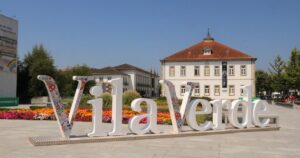 Vila Verde is a historic village located in the Cávado sub-region, with an unparalleled cultural and natural heritage. Some of the village's main points of interest include:
Vila Verde is a historic village located in the Cávado sub-region, with an unparalleled cultural and natural heritage. Some of the village's main points of interest include:
• Vila Verde Castle, a medieval castle that dominates the town.
• The Vila Verde Main Church, from the 16th century, is an example of Portuguese Renaissance architecture.
• Parque da Peneda-Gerês is the largest national park close to the village and is an important tourist destination.
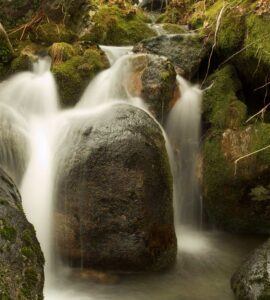 Terras de Bouro, a jewel in the north of Portugal, it is a charming village that stands out for its fusion of natural beauty and local culture. Nestled in the stunning setting of the Peneda-Gerês National Park, it offers fascinating trails, picturesque waterfalls and a rich historical heritage. Explore the authenticity of the typical streets of northern Portugal, taste the local cuisine and immerse yourself in the serenity of nature.
Terras de Bouro, a jewel in the north of Portugal, it is a charming village that stands out for its fusion of natural beauty and local culture. Nestled in the stunning setting of the Peneda-Gerês National Park, it offers fascinating trails, picturesque waterfalls and a rich historical heritage. Explore the authenticity of the typical streets of northern Portugal, taste the local cuisine and immerse yourself in the serenity of nature.
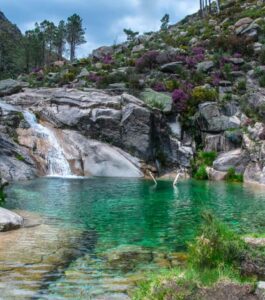 Peneda-Gerês National Park is a stunning natural area in Portugal, full of interesting activities to do. Here are some suggestions for things to do in Peneda-Gerês National Park:
Peneda-Gerês National Park is a stunning natural area in Portugal, full of interesting activities to do. Here are some suggestions for things to do in Peneda-Gerês National Park:
Hikes and Trails:
The park has an extensive network of trails that lead to beautiful landscapes, waterfalls and viewpoints. Popular trails include the Gerês Route and the Brandas and Inverneiras Route.
Waterfalls:
Explore the region's impressive waterfalls, such as Cascata do Arado and Cascata do Tahiti. Some may require a hike, but the reward is worth it.
Viewpoints:
There are several viewpoints where you can enjoy stunning panoramic views of the park, such as Miradouro da Pedra Bela and Miradouro da Pedra Amarela.
Water Activities:
The Caniçada Dam offers opportunities for activities such as swimming, canoeing and boat trips.
Visit to Traditional Villages:
Explore the region's picturesque villages, such as Lindoso and Pitões das Júnias, where you can find traditional stone buildings and a charming rural setting.
Wildlife Observation:
The park is home to several species of wildlife, including wild horses, deer and rare birds. Bring binoculars for better observation.
Hot springs:
Enjoy the relaxing thermal waters of Caldas do Gerês for a moment of rest and recovery.
Equestrian Tourism:
Some local companies offer horseback riding tours through the park's stunning landscapes, a great way to explore the area.
Camping and Outdoor Activities:
The park offers camping areas, allowing you to experience nature up close. It is also a great place for outdoor activities such as climbing and cycling.
Regional Gastronomy:
Be sure to try the delicious local food at restaurants in the region. Try dishes such as Portuguese stew and the famous cabidela rice.
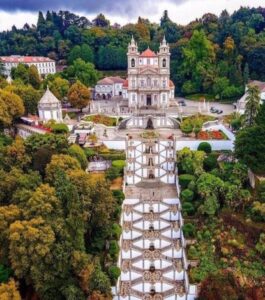 Braga, a city full of history and charm, offers a unique experience for visitors. Some places to visit:
Braga, a city full of history and charm, offers a unique experience for visitors. Some places to visit:
Sanctuary of Bom Jesus do Monte:
This is one of the most emblematic places in Braga, known for its impressive staircases and beautiful gardens. The panoramic view from the top is stunning.
Braga Cathedral (Sé Cathedral):
The cathedral is a historical and architectural landmark of the city. It is one of the oldest religious monuments in Portugal.
Historic center:
Strolling through the historic center is a charming experience, with narrow streets, picturesque squares, traditional shops and cozy cafes.
Raio Palace:
This palace is a masterpiece of the Rococo style in Portugal, known for its ornate facades and beautiful interiors.
Biscainhos Museum:
A museum that presents the history and culture of the region, located in an old palace. It's a great way to learn more about Braga and its history.
Municipal market:
Visiting the market is a fantastic way to learn about local culture and sample fresh produce, such as fruit, vegetables, fish and regional products.
Bridge Park:
An urban park where you can enjoy walks, bike rides and leisure moments by the river.
D. Diogo de Sousa Museum:
An archaeological museum that presents a rich collection of historical artefacts from prehistory to Roman times.
Cultural events:
Check to see if there are any cultural events, concerts, festivals or exhibitions taking place during your visit. Braga has a lively cultural agenda.
Local Gastronomy:
Be sure to try the typical dishes of the region, such as “Pudim Abade de Priscos” and “Bacalhau à Braga”.
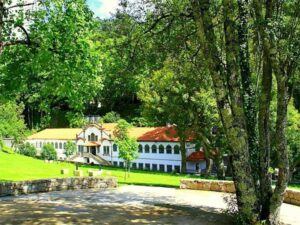 Caldelas is a parish located in the municipality of Amares, in Portugal. This area is known for its thermal spas and natural beauty. Here are some suggestions for what to do in Caldelas:
Caldelas is a parish located in the municipality of Amares, in Portugal. This area is known for its thermal spas and natural beauty. Here are some suggestions for what to do in Caldelas:
Hot springs:
One of Caldelas' main attractions is its thermal spas. The Caldelas Hot Springs offer therapeutic treatments with natural mineral waters, known for their beneficial properties for health.
Nature Tours:
The region around Caldelas is full of beautiful natural landscapes. You can go hiking or cycling along the region's trails, taking the opportunity to admire the surrounding nature.
Village Park:
Parque da Vila is a green space where you can relax, have a picnic and enjoy a peaceful environment. It's a great place to spend time outdoors.
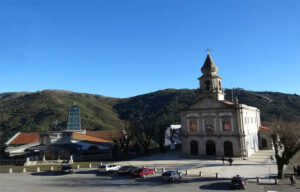 The Sanctuary of São Bento da Porta Aberta is a Portuguese Catholic sanctuary located in the parish of Rio Caldo, municipality of Terras de Bouro. It is the second largest Portuguese sanctuary, after Fátima, and receives around 2.5 million pilgrims annually.
The Sanctuary of São Bento da Porta Aberta is a Portuguese Catholic sanctuary located in the parish of Rio Caldo, municipality of Terras de Bouro. It is the second largest Portuguese sanctuary, after Fátima, and receives around 2.5 million pilgrims annually.
The sanctuary was built at the end of the 19th century, replacing a small hermitage that had existed on the site since the 17th century. Its name is due to the fact that the original hermitage had its doors always open, serving as a shelter for travelers.
The sanctuary consists of a basilica, a crypt and a group of chapels. The basilica is a neo-Gothic style building, with a central nave and two side naves. The crypt is dedicated to Saint Benedict and contains a reliquary with his relics.
The sanctuary is an important pilgrimage center for Portuguese Catholics. Every year, thousands of pilgrims visit the sanctuary to pray to Saint Benedict and ask for his intercession.
The sanctuary is also an important tourist destination. Every year, thousands of tourists visit the sanctuary to learn about its history and architecture.
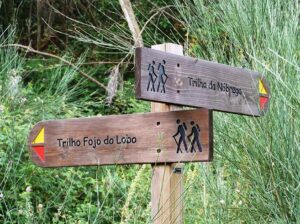 The Fojo do Lobo Trail is a pedestrian trail in Pequena Rota (PR) located in the parish of São Lourenço da Montaria, municipality of Viana do Castelo, Portugal. The route is 9.7 km long and is of low difficulty, making it ideal for family walks.
The Fojo do Lobo Trail is a pedestrian trail in Pequena Rota (PR) located in the parish of São Lourenço da Montaria, municipality of Viana do Castelo, Portugal. The route is 9.7 km long and is of low difficulty, making it ideal for family walks.
The route starts in the village of Montaria and follows rural and forest paths. Along the way, hikers can enjoy the region's natural beauty, including oak, pine, and chestnut forests.
One of the points of interest on the route is Fojo do Lobo, an ancient structure that was used to capture wolves. The fojo consists of a circular ditch about 20 meters in diameter, surrounded by high walls. In the center of the ditch, there is a trap that was activated when a wolf entered the ditch.
The Fojo do Lobo Trail is an excellent option for those who want to discover the natural beauty of the Viana do Castelo region and learn about the history of wolf hunting.


